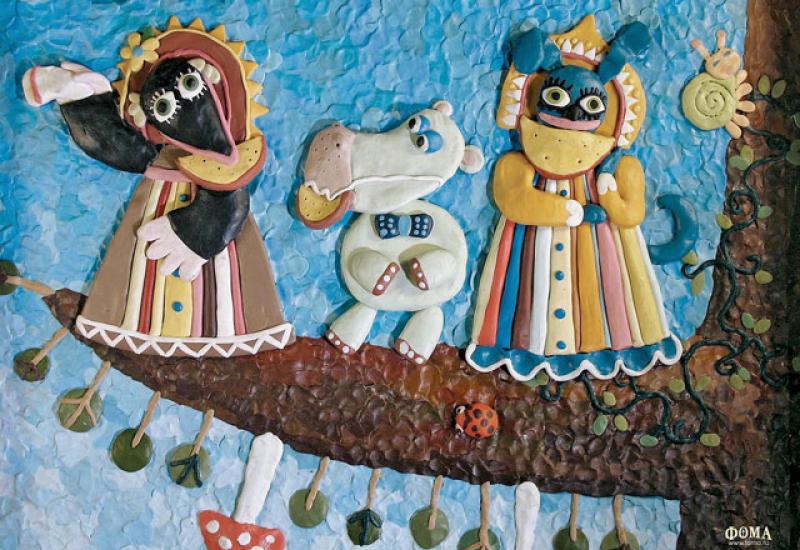The vast majority of children's games and toys are divided into "boys'" (wheels, cars, springs) and "girly" (dolls, their dresses and pots). But there are toys for every child, and one of them, of course, is molded from colored clay and pliable, which not only develops the coordination of the fingers, but also contributes to the expansion of world view, the development of the child's imagination and ingenuity.
So what is the plastiline and to whom we owe its invention?
Plastiline (ital. Plastilina comes from the Greek word) - material for modeling, made from peeled and finely ground clay with the addition of wax, fats, dyes and other substances that prevent drying.
There is no consensus about who exactly can be considered the inventor of the plastiline. In Germany they believe it was Franz Kolb (patent 1880) in the UK - William Harbutt (No. 1899). There are other versions. However, most agree that the plastiline for the first time was made by the Munich pharmacist Franz Kolb in the end of XIX-th century.
Before the invention of Franz Kolb the molding was the business of mainly professionals: painters and sculptors. They use a natural clay as a working material. The main disadvantage of it was low resistance to drying and temperature drop. Most of the artists were working in the studio, located on the spacious and well-lighted, but poorly heated attics or lofts. In winter the models made of clay, while remaining in a cold studio, freeze, and if even then thawed, then work with it was no longer possible. There were among Kolb’s friends a lot of artists and sculptors. To help them, Kolb after many experiments in the 1880s developed a material which he called Kunst-Modellierton (clay for sculpting works of art). Ten years later, he founded the company Franz Kolb Nachf for the production of material for sculpting under the brand name "Plastilin".
Englishman William Harbutt in 1899 patented the invention of "clay never dries up," called "Plasticine". His placticine was gray, but later it went on sale in the four colors, and soon expanded its range of colors even more. In 1900 Harbutt founded his factory, which lasted until the fire in 1968, after which production of "plasticine" was moved to Thailand. "Plastiline" Franz Kolb called "Munich art clay" is also available.
... Today the word "plastiline" is commonly used in many countries, including Germany, Russia, and Ukraine. In the USSR there were produced two main types of plastiline: solid (sculpture) gray or green, and soft (for children), multicolored. The difference in the basic properties of these types of plastiline was achieved by adding to the stock of different amounts of oil in, thanks to which "Soviet" clay has a characteristic odor. Today, for the manufacture of children's plastiline responsible manufacturers use no engine oil but vegetable or animal fats.
Sculpture (solid) plastiline, unlike the child’s one, holds its shape better, allows you to make a rather small details of the model, including sculptural miniatures, does not stain and does not stick to your hands.
Plastiline is used not only children, artists, sculptors and architects, but also by the military, engineers and inventors. With plastiline outstanding military leaders of the twentieth century, modeled future battles, and scientists, engineers and builders have developed the first space suit, widely known today magnificent buildings, planes and automobiles, as well as much, much more ...
In some cases, the product of plastiline is so perfect that there is a desire to keep it as long as possible. You can use another popular material for sculpting, whose main components are water, salt and wheat flour. It is becoming increasingly popular, including through its "green" qualities. In the 1930s, the material in the form of a paste was produced in the United States for the cleaning of wallpaper, but it turned out that the students willingly used it for modeling. In 1956, it went on sale under the brand name Play-Doh. This mixture was softer than the clay to a more convenient and child molding and, moreover, it is sufficient not only rapidly dries in a furnace or oven, but also outdoors, that allows to retain the work of young sculptor.
In recent years, the plastiline has become very popular among animators: remember for example "Plasticine Crow"! Television workers keep up with animators: in 2000 at the "Royal Horticultural Society" British television producer James May has created "Plasticine Paradise" - plasticine garden with flowers, trees, strawberries and cabbage in full size. To do this he needed 2.6 tons of plasticine 24 colors, and a half months of hard work and more than 2,000 associates!
... If a child can not cope with color cubes clay, put it in a warm place. A few minutes later clay becomes malleable even in children's fingers. And who knows, perhaps precisely because of plasticine child will grow a worthy successor of Michelangelo and Rodin!

